Key takeaways:
- An inclusive curriculum values diversity by incorporating varied perspectives, fostering engagement, and promoting empathy among students.
- Creating an inclusive educational environment empowers students to share their identities, encouraging critical thinking and collaboration.
- Effective curriculum development involves self-reflection, incorporating diverse voices, and adapting resources to resonate with all students.
- Regular evaluation and student feedback are crucial in assessing curriculum effectiveness and ensuring it meets the needs of a diverse student body.
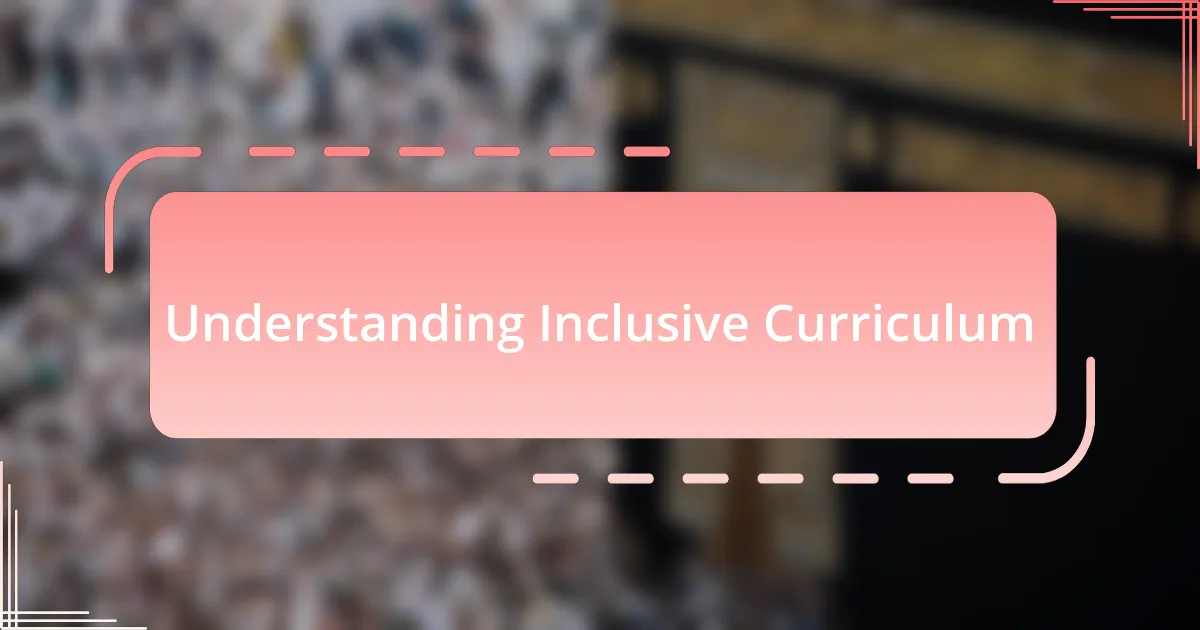
Understanding Inclusive Curriculum
An inclusive curriculum is designed to embrace diversity and ensure every student’s voice is heard. I remember during my early teaching days when I realized a few students felt overshadowed in discussions. It struck me that a curriculum should not only present information but actively encourage participation.
When we talk about inclusion, we must consider the varied backgrounds, beliefs, and experiences students bring into the classroom. It’s fascinating how a single story or perspective can resonate differently with each student, isn’t it? By incorporating a range of viewpoints, we foster a richer learning environment where all students can relate to the material on a personal level.
Additionally, an inclusive curriculum challenges the traditional one-size-fits-all approach. I’ve seen firsthand how tailoring lessons to acknowledge different cultural and religious backgrounds fosters mutual respect and understanding. Have you ever noticed how students tend to engage more when they see their own experiences reflected in the coursework? This connection not only enhances learning but also promotes empathy and a sense of community within the classroom.
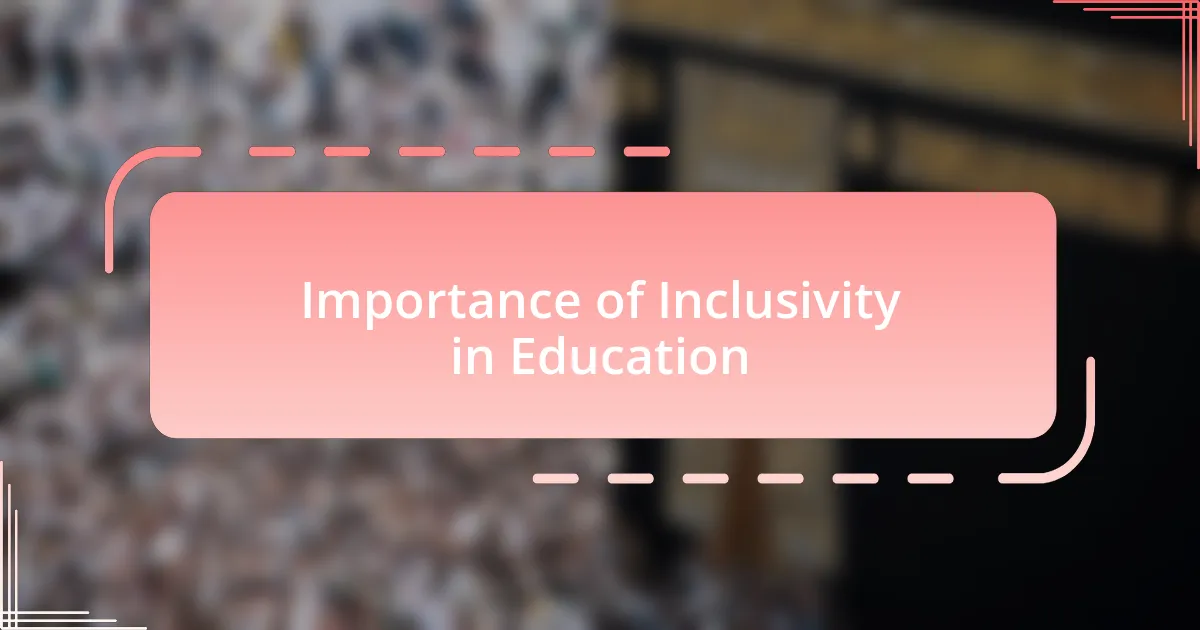
Importance of Inclusivity in Education
The importance of inclusivity in education can’t be overstated. I still vividly remember a moment when a student from a different cultural background shared a unique perspective during a lesson. The look of surprise and delight on their face when their ideas were valued—it really highlighted for me how inclusivity can transform a learning space into a thriving community.
When we create an inclusive environment, we’re not just accommodating diverse needs; we’re empowering students. Reflecting on my experiences, I’ve seen how students flourish when they feel their identities and beliefs are acknowledged. Have you ever noticed how a supportive environment can encourage even the shyest students to shine? Inclusivity invites everyone to participate, spurring learning and personal growth.
Moreover, a commitment to inclusivity fosters critical thinking and creativity. I’ve often witnessed lively debates emerge when students bring their differing viewpoints to the table. Isn’t it incredible how these discussions can lead to deeper understanding and collaboration? It’s clear to me that when we embrace diversity in the classroom, we enrich not only our teaching practices but also the educational experience for every student involved.

Key Principles of Inclusive Curriculum
Key Principles of Inclusive Curriculum
One of the fundamental principles of an inclusive curriculum is recognizing and valuing individual differences. I recall a time when I adapted a lesson plan to include various religious perspectives, allowing students to explore their beliefs alongside one another. This approach not only fostered respect but also ignited curiosity about each other’s backgrounds. Isn’t it amazing how much we can learn when we open our minds to others’ experiences?
Another key principle is the need for diverse teaching materials that reflect various perspectives and cultures. I remember searching for resources that showcased stories from different faiths and traditions, and the excitement in the classroom when students saw their own beliefs represented. Including a variety of voices helps learners feel seen and understood, creating a more connected learning environment. How can we expect students to engage if they don’t see their own experiences reflected in what they study?
Lastly, collaboration among students is essential in an inclusive curriculum. I’ve often designed group activities where students from different backgrounds worked together, sharing insights and learning from each other. The energy in these groups is palpable, and it’s rewarding to see how collaboration breaks down barriers and builds friendships. Isn’t it inspiring to witness the bonds formed when students collaborate, transcending their differences and celebrating what connects them?
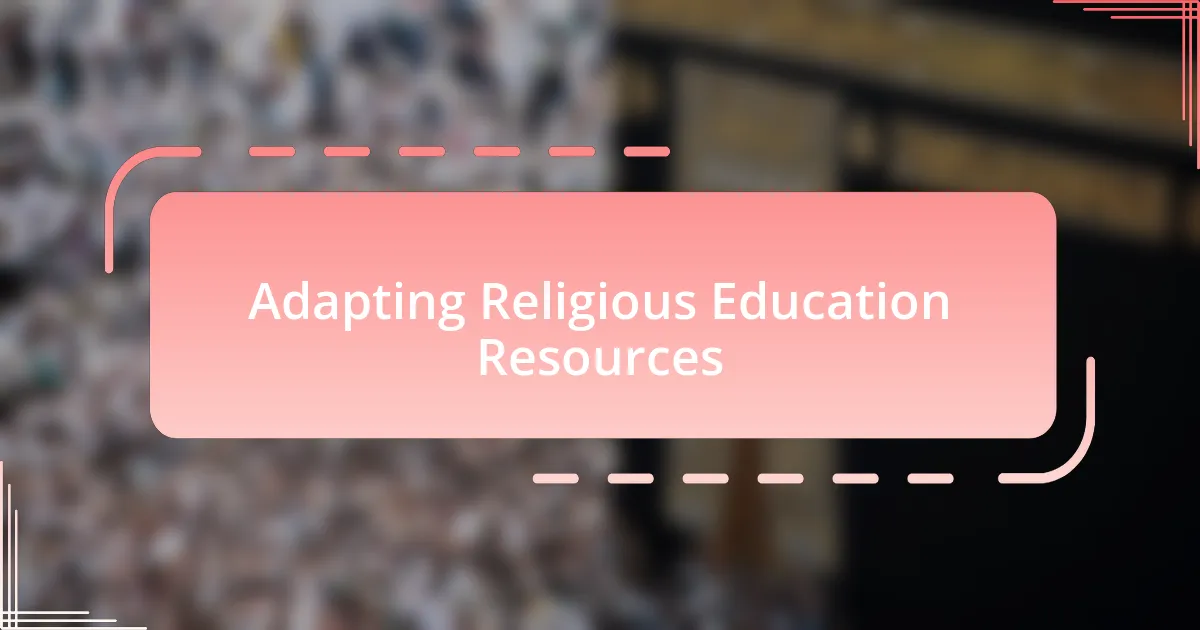
Adapting Religious Education Resources
When adapting religious education resources, it’s crucial to consider the diverse backgrounds of students. I once came across a lesson that solely focused on a single tradition, which left some students feeling alienated. By integrating stories and practices from multiple faiths, I could transform that lesson into a rich tapestry of experiences that every student could relate to. How can we expect students to engage meaningfully in discussions if they can’t see their lives reflected in the materials?
Another technique I found effective was modifying language and imagery in resources to be more inclusive. For instance, I replaced specific cultural references with broader concepts that resonate across different beliefs. This shift helped students connect with the content on a deeper level. Have you ever noticed how small changes can create a welcoming atmosphere for discussion?
I also believe that it’s essential to include digital resources in our adaptations. I remember using multimedia presentations that featured interviews with people from various faiths. This not only made the lessons more dynamic but also allowed students to hear firsthand accounts of belief systems. How engaging is it for students to learn directly from the voices of those sharing their own spiritual journeys?
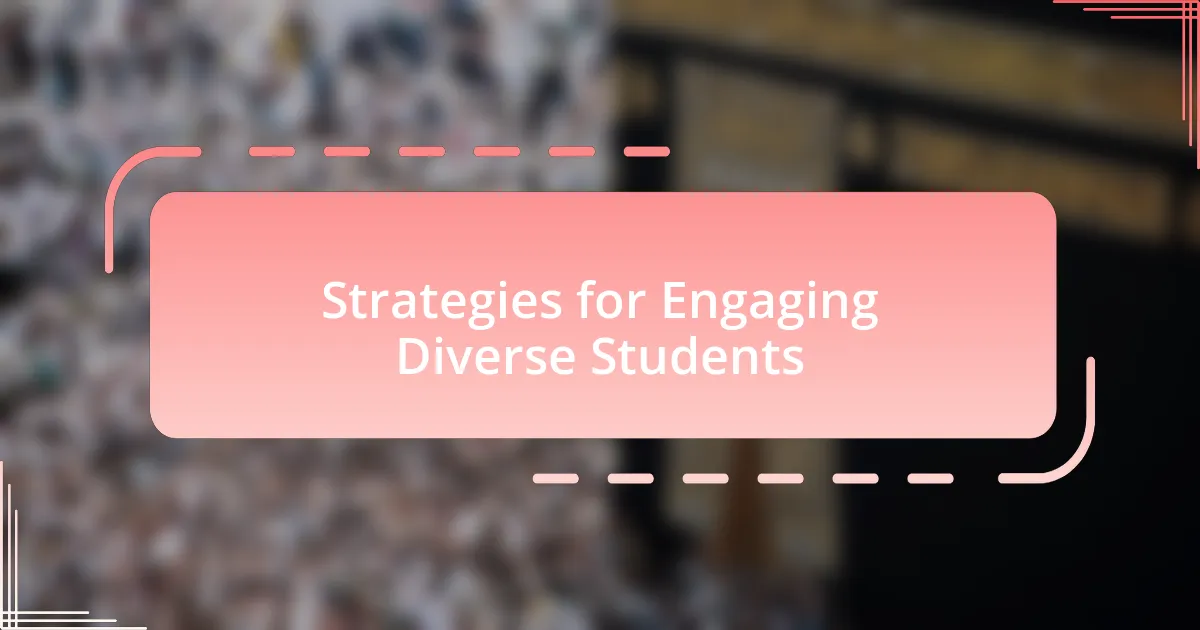
Strategies for Engaging Diverse Students
Engaging diverse students in religious education requires an understanding of their unique experiences and perspectives. I recall a classroom where students came from various cultural backgrounds; to foster engagement, I introduced group projects that allowed them to explore their own religious traditions. This not only empowered them but also encouraged sharing, making everyone feel valued. How transformative is it when students teach each other about their beliefs?
Another strategy I often use is incorporating discussions that encourage critical thinking about faith and ethics rather than solely focusing on specific doctrines. By posing thought-provoking questions such as, “What can we learn from each other’s beliefs?” I’ve seen students open up, sharing reflections from their personal lives. This dialogue creates an inclusive space where students feel their voices matter and their experiences are honored.
I also find that incorporating community events, like inviting local religious leaders for discussions, adds a real-world dimension to classroom learning. During one such event, a guest speaker shared their journey of faith, which deeply resonated with my students. It made me think, how does real-world engagement change our understanding of each other’s beliefs? By weaving these experiences into the curriculum, we cultivate a sense of community and a shared exploration of spirituality.

Personal Experiences in Curriculum Development
In my journey of curriculum development, I learned the importance of reflecting on my own biases and experiences. I remember crafting a lesson on the significance of sacred texts across different faiths. As I prepared, I was struck by how my own background shaped my perspective. This realization pushed me to rethink the language I used, ensuring it was inclusive and welcoming. It taught me that our experiences can either open doors or create barriers.
Another impactful experience occurred when I collaborated with a diverse group of educators to redesign a unit on global religious practices. We held candid discussions about our beliefs and teaching methods, which led to the inclusion of stories that resonated with students’ lived experiences. This collaboration highlighted for me that the richness of our curriculum comes from the blend of myriad voices and perspectives. How often do we tap into the collective wisdom around us?
A particularly memorable moment happened during a class discussion on belief systems. One of my students bravely shared their struggle with their faith, sparking a heartfelt exchange among peers who had faced similar challenges. Watching them support each other made me realize that creating spaces for vulnerability is just as crucial as the content we deliver. Isn’t it fascinating how shared experiences can weave a tighter community?
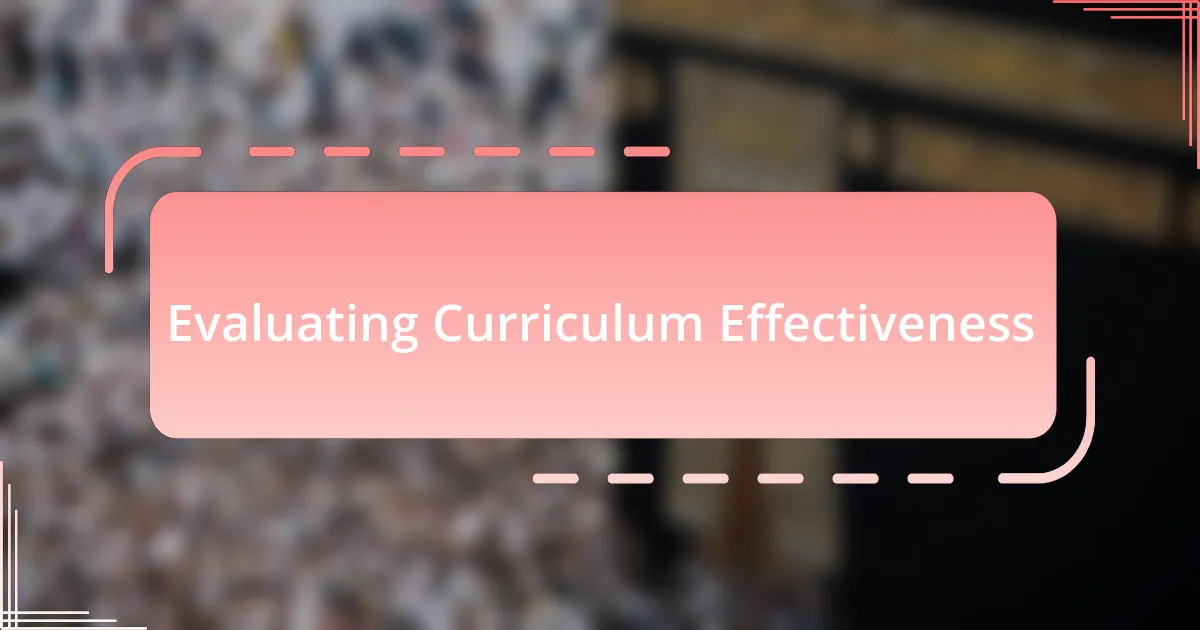
Evaluating Curriculum Effectiveness
Evaluating the effectiveness of a curriculum requires a keen eye on how well it resonates with students. I remember conducting a survey after a unit on comparative religions, asking students to reflect on their experiences. The feedback was mixed, and I learned that while some felt seen and valued, others were looking for deeper connections to their own beliefs. What does this say about our approach?
Data is an essential part of assessment, but I also find that personal stories offer invaluable insights. Once, a student approached me after class, sharing how a lesson on empathy within various faiths had shifted their perspective on a classmate’s beliefs. That moment underscored for me the profound impact our curriculum can have, highlighting that subjective experiences can sometimes reveal more than any statistic.
I often question whether our evaluations incorporate voices from all demographics. When I began inviting student feedback into our review processes, I realized the importance of creating avenues for unheard experiences. Wouldn’t it be transformative if we could regularly adapt our curriculum based on this real-time input? The effectiveness of our teachings relies not just on what we plan but on how responsive we are to the lives of our students.